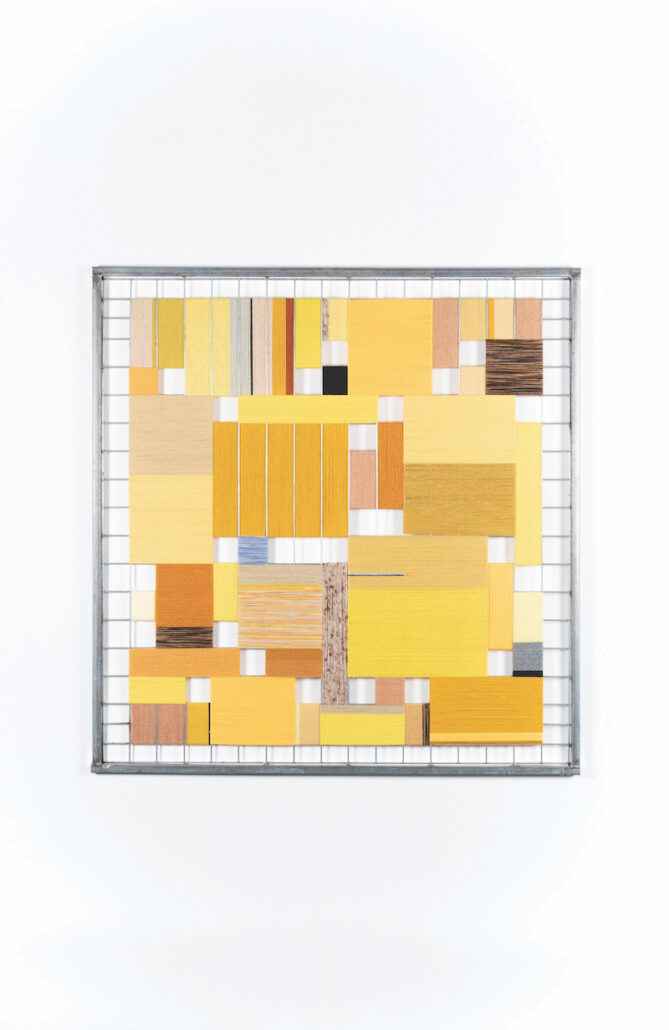Melbourne-based artist Jacqueline Stojanović’s distinctive weaving practice is driven in its meaning and technical application by the medium’s cultural history, one which is inextricably bound with her Serbian heritage. Her family migrated to Australia before she was born, when Serbia was still known as Yugoslavia. “I find great inspiration from my family’s homeland, particularly a carpet weaving town called Pirot,” she says. This heritage is evident throughout her practice, as she uses this traditional Slavic practice with a contemporary and abstract approach. “Weaving is one of our foundational technologies as humans, and one we continue to use as a tool, looking to the past as a means of navigating the present to challenge its rapid shifts in collective social and material values.”
Throughout her works, Stojanović follows a visual language of bold colours, combining them in woven squares and rectangles on a metal grid that, at times, will also branch out into other forms such as drawing, assemblage, and installation. Sometimes wooden blocks will find their way into her created forms as in Plaža,2022and Colour Field Drawing, 2022. Other times she will incorporate letter iconography as in Azbuka Rug, 2021.
“Seeing weaving as an ancient carrier of culture, I explore past and present personal cultural narratives,” explains Stojanović, “while adopting the language of abstraction and approaching weaving through an open use of materials from the industrial to the domestic.”
Stojanović’s Concrete Fabric, 2019is a larger scale, panoramic expansion of her woven works. The concertina inspired layout presents a different visual story on each panel, playing with negative spaces and various colour palettes.
Bold squares and rectangles are woven on a wire frame that isn’t hidden but enhanced by the selective arrangement of the weavings. One panel uses a palette of earthy greens, browns and grey tones, while another has hints of purple, red and ultramarine blue. Light shines through the negative spaces, imprinting a pattern on the gallery floor, allowing the room to become part of the artwork.
Currently, Stojanović is represented by Haydens Gallery in Brunswick East, Victoria, where she will soon exhibit a new series of work initiated on an artist residency at Lottozero in Prato, Italy. A solo exhibition featuring a new installation will also be presented by Parnell Project Space in New Zealand.

Jacqueline Stojanović, Grid XIII, 2022. Wool and cotton on steel mesh, 90 x 90cm.

Jacqueline Stojanović, Concrete Fabric, 2019. Wool on steelmesh, dimensions variable. Photo: Jacqui Manning.

Jacqueline Stojanović, Plaža (beach), 2022. Coloured pencil on wood, 21.5 x 21.3 x 2.1cm. Photo: Christo Crocker.

